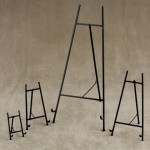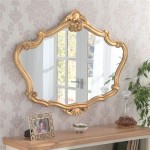How To Fix a Mirror on a Tiled Wall
Fixing a mirror securely to a tiled wall requires careful planning and execution. Several methods offer reliable adhesion, each with its own advantages and disadvantages. Choosing the correct method depends on the mirror's size, weight, and the specific characteristics of the tiled surface.
Before initiating any fixing process, thorough preparation is crucial. The tiled surface must be meticulously cleaned to ensure optimal adhesion. Any dust, grease, or soap residue should be removed using a suitable tile cleaner. Allow the surface to dry completely before proceeding. Inspect the tiles for any loose or damaged areas; these should be addressed before hanging the mirror.
Measuring and marking the desired mirror position is the next critical step. Use a level to ensure the markings create perfectly horizontal and vertical lines. Precise measurements are essential for a straight and aesthetically pleasing result. Marking the mirror's outline on the wall provides a clear guide during installation.
One popular method for fixing mirrors to tiled walls involves using adhesive. Specifically designed mirror adhesives offer strong bonding and are often formulated to prevent mirror damage, commonly known as "black edge." These adhesives are typically applied in vertical lines or a grid pattern on the back of the mirror. Follow the manufacturer's instructions carefully regarding application and drying times.
When using adhesive, supporting the mirror while it sets is essential, especially for larger or heavier mirrors. Temporary supports, such as wooden blocks or strong tape, can be used. These supports should remain in place until the adhesive has fully cured, which typically takes 24 to 72 hours, depending on the product and ambient conditions.
Another effective method utilizes mirror clips or brackets. These mechanical fixings offer a robust solution, particularly for heavy mirrors. Mirror clips are typically installed around the perimeter of the mirror, gripping its edges and securing it to the wall. Precise positioning of the clips is crucial for even support and stability.
Installing mirror clips requires drilling holes in the tiles. Use a tile drill bit specifically designed to minimize the risk of cracking or chipping the tiles. Drilling at a slow speed and applying gentle pressure is recommended. Wall plugs appropriate for the tile and wall material should be inserted into the drilled holes before attaching the clips.
A combination of adhesive and clips can provide the most secure fixing for very large or heavy mirrors. This approach offers both the bonding strength of the adhesive and the mechanical support of the clips. This dual method ensures optimal stability and minimizes the risk of movement or detachment.
Choosing the right adhesive or clips depends on several factors. Consider the weight and size of the mirror, the type of tiles, and the anticipated environmental conditions. For example, in areas with high humidity, a waterproof adhesive is crucial. Similarly, larger mirrors require stronger fixings than smaller ones.
Before drilling into tiles, always check for hidden pipes or wiring. A pipe and wire detector can help identify potential hazards. Understanding the wall structure behind the tiles is necessary for selecting appropriate wall plugs and screws to ensure a secure fixing.
Silicone sealant can be used to create a waterproof seal around the edges of the mirror. This helps to prevent moisture from getting behind the mirror, which can lead to damage or loosening over time. Apply the sealant neatly after the mirror is fixed and allow it to cure fully before exposing it to water.
For particularly uneven walls, shims can be helpful in achieving a flush fit. These small wedges can be placed behind the mirror or clips to compensate for any irregularities in the wall surface. This ensures the mirror hangs straight and prevents any gaps between the mirror and the wall.
Safety precautions are paramount throughout the entire process. Wear appropriate safety glasses when drilling to protect your eyes from dust and debris. Gloves are recommended when working with adhesives and sealants. Always follow the manufacturer’s instructions for all products used.
Maintaining the mirror after installation involves regular cleaning. Use a non-abrasive cleaner specifically designed for mirrors and glass. Avoid harsh chemicals that can damage the mirror surface or the adhesive/sealant. Regular cleaning prevents the buildup of grime and maintains the mirror's reflective qualities.
Different types of mirror clips are available, catering to various mirror thicknesses and weights. J-bar clips, L-bar clips, and Z-clips are common types. Choose clips appropriate for the specific mirror being installed. Consider the aesthetic aspects as well, selecting clips that complement the mirror's design and overall bathroom style.

How To Hang Mirrors On Tile 3 Ways A Bonus The Palette Muse

How To Hang Mirrors On Tile 3 Ways A Bonus The Palette Muse

How To Hang A Mirror On Tile Wall Remington Avenue

Diy Mosaic Tile Bathroom Mirror Centsational Style

How To Remove A Mirror Glued The Wall Forbes Home

Diy Mosaic Tile Bathroom Mirror Centsational Style

How To Hang A Bathroom Mirror Over Tile Wainscoting Mimzy Company

Diy Mosaic Tile Bathroom Mirror Centsational Style

Diy Mirror Frame With Glass Mosaic Tile Armchair Builder Blog Build Renovate Repair Your Own Home Save Money As An Owner
:strip_icc()/Design_CathieHongInteriorsPhoto_ChristyQPhotography-b2290decbe0e4d0b952f280fb7bdc896.jpg?strip=all)
How To Remove A Bathroom Mirror From The Wall








